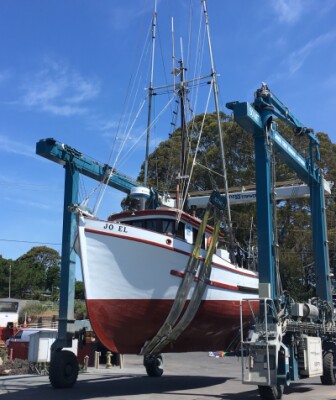Answering the alarm
From U.S. Coast Guard reports
One late-September day, the three-man crew of a 76-foot steel seiner was fishing for albacore tuna off California when the bilge alarm sounded at about 1 p.m. The skipper discovered about a foot of water below the transmission. He determined the shaft packing wasn’t the source and that the water level was rising rapidly.
From the pilothouse, the skipper made a mayday call and relayed the situation and position to the Coast Guard.
Next he engaged the vessel’s brine chiller pump to help dewater the hold and shaft alley. By 2 p.m., flooding had slowed enough to give him time to search for the source.
He first noticed that the electrical-service generator was becoming submerged. To avoid electrocution, he shut off the main power, which shut down the bilge and brine pumps. Fortunately, the Coast Guard had an aircraft on its way with dewatering pumps.
The skipper retrieved a 12-volt battery from the engine room and wired it to restore VHF radio power while the deckhand popped a smoke flare to signal the approaching aircraft.
The deckhands got a portable pump running, while the skipper waded through what was now 4 feet of water and searched around the bilge with his foot. He felt water entering through a golf-ball-sized hole; standing directly over it eased the flooding rate, and the water started to recede.
The deckhands searched for something to plug the hole. They found a piece of wood, which the skipper wedged into the hole. However, the water kept dislodging the plug. Minutes later, the portable pump quit.
The Coast Guard delivered a second pump. While the deckhands worked to get both pumps running, the skipper returned to the engine room with a second plug. It wouldn’t remain in place either. At 6:30 p.m., following five hours of damage control, the skipper directed the deckhands to don survival suits and prepare to abandon ship.
They deployed and entered the life raft. The skipper grabbed the satellite phone, EPIRB, hand-held GPS and the crew’s pet cat before entering the raft.
A rescue helicopter retrieved them. They were uninjured and released. The vessel sank within an hour of the rescue.
Lessons learned
To determine exactly what safety equipment your boat is required to carry, use the Checklist Generator on the Coast Guard’s official program website, www.fishsafe.info, or schedule a free courtesy dockside exam from your regional office by emailing a request to [email protected].
You can buy damage-control kit at marine supply stores or assemble yourself. Maintain your safety equipment and practice emergency procedures so your crew is prepared and can fish safe.
This article is based on U.S. Coast Guard reporting and is intended to bring safety issues to the attention of our readers. It is not intended to judge or reach conclusions regarding the ability or capacity of any person, living or dead, or any boat or piece of equipment.








